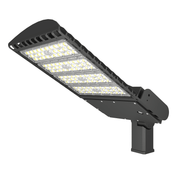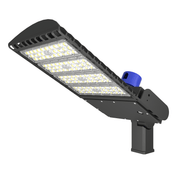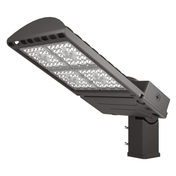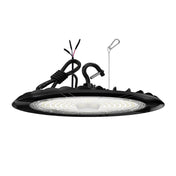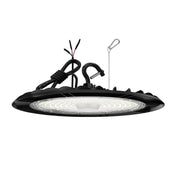First, the illumination standard. Different areas may have different requirements, such as different illumination in driveways, parking spaces, and entrances and exits. Then consider uniformity to avoid safety hazards caused by uneven brightness. There is also color rendering. You may need a light source with a high color rendering index to facilitate surveillance cameras to capture clear images. Energy saving and automatic control are also key points, such as using LED lights and sensors to save energy. Anti-glare design to avoid direct light to the human eye or vehicle drivers. In terms of emergency lighting, ensure sufficient lighting for evacuation during power outages. There are also installation heights and spacing, which affect the uniformity and coverage of lighting.
Proper parking lot lighting requirementsensure the safety, security, and efficiency of enclosed parking spaces. Whether you manage a commercial parking lot or design a new facility, meeting parking lot lighting standards is essential for compliance, visibility, and energy saving. The right LED garage lighting solution can improve navigation, reduce accidents, and create a well-lit and warm environment for drivers and pedestrians.
Parking lot lighting industry standards
Meeting parking lot lighting standards is essential to ensure compliance, visibility, and energy efficiency. The Illuminating Engineering Society (IES) provides guidelines for parking lot lighting levels, recommending an average brightness of 1-5 foot candles (10-50 lumens per square foot), depending on traffic volume and usage. Areas near entrances, exits, and sidewalks may require higher brightness levels for enhanced safety.
In addition, lighting compliance standards emphasize uniformity—reducing glare and eliminating dark spots to improve safety and visibility. Proper fixture placement and lumen output ensure that parking lots remain well-lit without consuming excessive energy. LED lighting is the preferred solution due to its long life, cost-effectiveness, and ability to effectively meet these requirements.
Parking Lot Lighting Technology Comparison
When selecting lighting for parking lots, it is important to compare different technologies to determine the option with the best life, efficiency, and performance. Traditional options such as fluorescent and HID (high-intensity discharge) lamps were once common, but they have disadvantages such as high energy consumption, frequent maintenance, and poor long-term light quality.
In contrast, LED garage lighting solutions offer superior efficiency, durability, and performance. LEDs use up to 70% less energy than traditional lighting, significantly reducing operating costs. They also provide consistent brightness levels in parking spaces, eliminating flickering and dimming issues often seen in older technologies. Additionally, LED lights have a longer lifespan (up to 100,000 hours), which reduces maintenance and replacement costs.
Designing an Effective Garage Lighting Layout
A well-planned garage lighting layout ensures even lighting, minimizes dark spots and improves visibility for drivers and pedestrians. The proper level of parking lot lighting depends on the size of the space, the height of the ceiling, and the location of the fixtures. Here are the key factors to consider when designing a lighting plan:
- Fixture Location and Spacing – Fixtures should be evenly spaced to maintain even brightness in parking spaces. Spacing fixtures too far apart can create shadows, reducing visibility and safety.
- Mounting Height – The ideal height for LED fixtures is typically 8 to 14 feet, depending on the structure. Higher ceilings may require high-lumen fixtures to maintain adequate lighting.
- Color Temperature – The recommended range for parking lots is 4000K to 5000K, providing bright, daylight-like colors that enhance visibility and reduce eye strain.
- Motion Sensors and Dimming Controls – Adopting smart lighting solutions can significantly improve energy efficiency. Motion sensors ensure that lights operate only when needed while dimming controls adjust brightness levels based on occupancy.
Maximize Energy Efficiency and Save Money
Energy efficiency is a top consideration when meeting parking lot lighting requirements, as lighting accounts for a large portion of operating costs. Upgrading to an LED garage lighting solution can help reduce energy consumption while maintaining optimal parking lot lighting levels.
Key energy-saving strategies include:
- LED Technology – LED lights use up to 70% less energy than traditional HID or fluorescent fixtures, reducing electricity bills and maintenance expenses.
- Smart Controls – Implementing motion sensors and dimming capabilities can further reduce energy consumption by adjusting brightness based on occupancy. When the garage is vacant, lights remain dimmed, and when movement is detected, light levels increase.
- Directional Lighting – LEDs provide an even distribution of light, reducing wasted light and improving efficiency. Unlike traditional bulbs that emit light in all directions, LEDs focus light where it’s needed.
- Rebates and Incentives – Many utility companies offer incentives for upgrading to energy-efficient lighting. Facility managers can take advantage of rebates to offset installation costs.
Compliance and Recommended LED Lighting Solutions
Ensuring compliance with parking lot lighting standards is critical for safety, reducing liability, and improving energy efficiency. Many regulations, including the IES Lighting Compliance Standard, specify minimum lighting levels in parking lots to maintain visibility and safety. Key requirements include:
- Minimum lighting levels – IES recommends 1-5 foot candles (10-50 lumens per square foot), with higher levels near entrances and pedestrian areas.
- Uniformity – Light distribution should be uniform to avoid dark spots, improving navigation and safety.
- Color Rendering Index (CRI) – A CRI of 70 or higher ensures that objects and people appear natural under artificial lighting.
- Energy efficiency requirements – Many local regulations require garages to use energy-saving technologies such as LED garage lighting solutions, motion sensors, and dimmable luminaires.
In summary, parking lot lighting requirements mainly include illuminance, uniformity, color rendering, energy-saving measures, anti-glare, emergency lighting, installation parameters, and standards to follow. Make sure each section is concise, data is accurate, etc., and also maintain and check it regularly.



